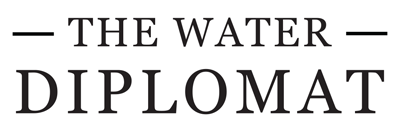Search
Terms searched: North America
Results: 90
1 Aug 2022 NEW YORK NY, United States
UN General Assembly Recognises Human Right To A Healthy Environment
The new resolution affirms a right that had earlier been recognised as a part of international human rights law and procedures by the UN Human Rights Council but also creates new formal links to environmental agreements.
28 Jul 2022 DETROIT MI, United States
Investment In Drinking Water Infrastructure Made Easy
A new tool to improve decision-making in the field of investments in drinking water drinking water investment has been developed in the United States.
28 Jul 2022 AMHERST MA, United States
Study Assesses Impact Of Lithium Mining On Water Resources
Lithium mining does reduce groundwater availability, but to a lesser extent than other sectors. The study focused on whether water supply would restock levels to compensate mining activity and found that this may depend on how old the water is, given that the recharge times for most aquifers in the
28 Jul 2022 OAKLAND CA, United States
Pacific Institute Launches Water Security Research Project
Pacific Institute's new Water and Climate Equity Strategy intends to provide tailored, evidence-based research and climate resilience strategies for communities at the forefront of water insecurity and climate change.
28 Jul 2022 WASHINGTON DC, United States
US To Invest In Water Related Ecosystems
The new investment programme is aimed "to advance quantifiable and sustained water savings by protecting watersheds impacted by wildland fire, restoring aquatic habitats and stream beds, and advancing other environmental restoration projects to mitigate drought-related impacts.”
28 Jul 2022 NEW YORK NY, United States
SDG 6 Special Event At The High-Level Political Forum
A safe and prosperous society depends on public health and those societies with better access to basic services are better equipped to cope with disruptions such as the pandemic. Leaders call for more strategic directions.
3 Jul 2022 MONTERREY, Mexico
Weeks Of Water Rationing In Northeast Mexico
The industrial city of Monterrey in northeast Mexico has begun to limit water access to six hours a day, although in some neighbourhoods, water has stopped flowing altogether.
3 Jul 2022 EVANSTON IL, United States
Study Finds Water And Food Insecurity Go Hand In Hand
Gallup World Poll 2020 data examined by Northwestern University and the Food and Agriculture Organisation of the United Nations (FAO: individuals experiencing water insecurity were up to 3 times more likely to experience food insecurity.
17 Jun 2022 WASHINGTON DC, United States
US Action Plan On Global Water Security
The US Action Plan on Global Water Security takes the significant step of making water security, including access to water, sanitation, and hygiene (WASH), a major component of US foreign policy for the first time.
4 Jun 2022 ARLINGTON VA, United States
Nature for Water Facility Supports Expansion Of Watershed Funds
The Nature For Water Facility has launched its first call for proposals to support local programs that promote collective watershed management and nature restoration. Local NGOs, utilities, government agencies, and corporate entities can apply.
25 May 2022 WASHINGTON DC, United States
Arctic Institute Attributes City Of Iqaluit’s Recurring Water Crises To Climate Change
Frequency of water crises attributed to climate change and poor water resource management. Low levels of precipitation and growing population contribute to unresolved problems.
15 May 2022 SAN DIEGO CA, United States
New Discovery: Antarctic Ice Covers Huge Water Reservoir
A vast reservoir of water has been detected in the mud and sediment underlying a part of the West Antarctic ice sheet. It is estimated to be several hundred metres deep, or about the size of two Empire State buildings.
